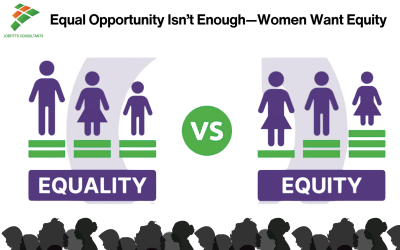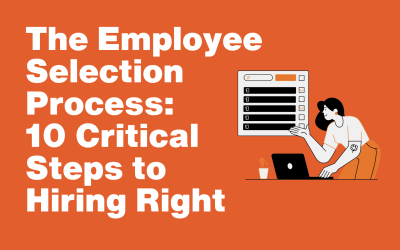Contents
The COVID-19 outbreak catapulted video technology into new areas of our lives. From video GP appointments to Zoom calls with friends, to astonishingly, Vet appointments online, 2020 has been the year of video technology.
Though some organisations have used video communication before, this change has made a significant impact on the recruiting landscape.
While the pandemic caused some industries to pause recruitment, in other sectors, organisations continued to build their teams.
Critical roles still needed to be filled, as recruiters worked together with organisations to support the hiring process – one way this was facilitated was the increasing use of video to both interview and then onboard.
While the use of video in the recruitment process had been on an upward trajectory for some years, COVID-19 has caused all industries and sectors to reassess how essential this technology is.
We are in the early days of video interviews being the norm. Yet, recruiters and organisations who integrate video into their hiring process successfully will enjoy more success than those who don’t.
Video Interviews: Here to Stay
Recent research has found that up to 84% of recruiters have reported altering their process to accommodate virtual exchanges. Video interviewing is now a significant part of many organisations’ recruitment process; more virtual recruiting is happening now than ever before.
Interviewing via video may not be a skill that you are familiar with – but with a better understanding of how video interviewing can be a success, you can start to reap the benefits.
Hiring managers often tell us with video interviewing
- It can be harder to connect and build rapport with candidates and
- that they are nervous about hiring candidates without meeting them in person.
We will go through how to improve your video interviewing skills later on – next, let’s take a look at getting acquainted with the practicalities of using video platforms.
Video Interview Platforms
In the peak of lockdown, throughout April and May, the once little-known video conferencing site Zoom experienced novel outages due to being overloaded with users – a representation of how many more people were using video software for the first time.
The first thing you must do is familiarise yourself with the video technology you will be using for your interviews.
For regular video meetings, the big players are Zoom, Skype for Business and Microsoft Teams – all are straightforward to use, and you can set up meetings with candidates using their email address.
Additionally, there is a specific recruitment video platform, Hinterview, which allows you to record and share interviews, questions, and use real-time feedback for an all-round virtual interview process.
But using video to interview candidates is a slightly different skill to meeting with your colleagues – let’s look at what else you will need to consider.
Assembling the Interview Panel

One of the most notorious parts of the recruitment process is the length. Video interviewing is great in this respect in that getting the people who need to be present is easier when the factor of distance is removed.
Don’t be tempted to think that because you are conducting your interview virtually that you should include a reduced panel.
There are many benefits to having more than one person on an interview panel. You reduce the chance of unconscious bias, you need different viewpoints, such as a senior management member but also someone closer to the role to ask role-specific questions.
Before you start your video interview process, make sure that every panel member who needs to be present at each different stage is available, but more importantly that they are confident using the software your organisation prefers.
Next, you will need to decide on the questions, and how you are going to conduct the interview. In regular interviews, the panel can jump in and take cues from each other on whether to move on or probe a subject further. But these cues are much harder to follow on video. (We cover body language and communication via video in more detail later in this article).
To eradicate the panel talking over each other, you could set out a guideline as to who will ask what, and in which order – with any further questions at the end. While this might feel slightly more formal than how you would generally conduct an interview, remember that the medium of video requires more planning and structure.
Choosing Your Setting
Where you choose to conduct the video interview from can have a significant impact on the atmosphere and thus, the outcome of the interview.
As an interviewer, it is up to you to put the candidates at ease, so choosing a calm and composed environment is the goal.
Pick somewhere well-lit, but avoid anywhere with a light source directly behind you, as this will cause you to appear as a shadowy figure. Video experts Wistia have produced a guide to looking great on webcam, which you can view here.
If you are interviewing from home, choose somewhere quiet where you won’t be disturbed by members of your household, outside noises or nosy pets. Remember to turn your phone off or on silent.
Choose somewhere with a neutral and tidy backdrop, as domestic scenes in the background can be distracting and appear unprofessional.
Screen Sharing and Candidate Privacy
Using video to interview candidates raises the issue of privacy, especially if you are planning on recording the video. You should get consent before the call if you plan to record the interview to review afterwards – all dedicated candidates should not have a problem with being recorded.
During the interview, you may want to share your screen with the candidates or have them share their screen with you to demonstrate their work.
When sharing your screen, you mustn’t have any other tabs open containing private or sensitive information relating to other candidates that you might have been looking over before the interview. I know this seems so logical and yet it is easy to make this slip-up unconsciously.
You should keep your screen as clear as possible during the interview. It can be distracting for the candidate if you share your screen with multiple tabs or windows open – close your inbox, company website or any other sites you would generally have open.
Pin the window containing the candidate to your screen, if you are sharing your screen; this will stop them from jumping around the screen or being obscured by a new window – you want to be able to see the candidate at all times.
If you are using Zoom for your interview, it is a good idea to set up different links for each interview slot or create ‘rooms’ so that candidates cannot join the same video link as each other. This could happen if one interview goes slightly over, and the next candidate clicks the link a few minutes ahead of time.
Video Interviewing Preparation and Skills
In reality, video interviews are similar to in-person interviews, in terms of the style and what you will be asking.
For live video interviews, the key difference is in making sure you are fully prepared, and that you have provided the candidate with everything they need for a smooth meeting.
This means checking that the candidate is familiar with and has all the necessary equipment and software they will need for the interview. You can provide candidates with a ‘How to’ email detailing what they will need and what to prepare for.
In this document include how to access the platform, examples of work you would like to see, who the interview panel is and how long you expect the interview to last for.
Getting all of the technicalities taken care of beforehand means you can use the interview time to focus on getting to know the candidate.
You can prepare a short script going over what the interview will entail, and a few icebreaker questions to get the interview started to ‘smooth’ the conversation. Mention to the candidate at this time if you will be making notes throughout so that they don’t view your head dipping as a negative sign which could derail them.
As I mentioned earlier, communicating via video brings a new dimension to the interview, and can be unsettling if you’re unfamiliar with this platform.
Let’s look closer at how to communicate effectively via video.
Communicating on Video

Unfamiliarity with video can lead to unease which could potentially impact your interview demeanour and affect your flow.
One criticism people have with video communication is that it is difficult to strike a genuine connection, but there are a few techniques you can use to help combat this.
Even with the fastest of internet connections, there will be a small delay between you and your candidates. Remember to let them finish what they are saying, and pause for a second or so to make sure before you start to speak.
Nodding is a great way to maintain your engagement level without the risk of interrupting. Nod while the candidate is speaking at points where you want to show you are communicating without interrupting their flow. And remember – a genuine smile goes a long way to communicating friendliness and approachability, critical attributes which will put your candidate at ease and help enhance the conversation.
Without physical and interpersonal cues, in a video interview, candidates can sometimes speak for longer than they normally would, and you will be wary of cutting them off mid-flow.
In any conversational setting, you can expect a degree of cross-talk, but this can derail a topic or an entire conversation quickly when this happens over video. This is why it is essential to lay down a format for you and the other interviewers beforehand.
Most video software allows you to ‘raise your hand’ or alert other panel members when you want to speak – make use of this feature.
Video Body Language

We often forget just how much of an interview relies on interpersonal communication and body language.
Eye contact is key, as is the position of the microphone. In your practice sessions, you will be aware of where the camera is and where to look, there is nothing worse for the interviewer than thinking you aren’t looking at them.
When it comes to audio if you have one use an external microphone or alternatively make sure you are speaking directly into whatever audio input you have.
We communicate with our hands and bodies as much as we do with the things we say, and these signals can be lost on video.
Because of this, it is a good idea to try to remember to emphasise your hand gestures and body movements slightly more than you would in a regular interview. The key is to not go over the top but to place extra emphasis on what you are saying so that it connects with the candidate.
Sit up straight and lean into the camera when it feels natural, but not too far – just enough that you look engaged and not pushed back in your chair.
You will want to look at your webcam to create a connection with the candidate, but you will also need to watch the candidate as they answer to gauge as much as you can about them. Aim for an even split of time spent looking into the camera and looking at the candidate on screen.
Signing Off
As the host, it is up to you to sign off the interview professionally and to ensure you and the panel have all the information they need.
In the last part of the interview, invite questions from the candidate, but if you are on a tight schedule remember to steer and contain the conversation – video interviews can have a habit of drifting off topic towards the end.
Close the interview by outlining what the candidate can expect to happen next and a timeframe, if possible. Stop the recording or end the meeting and remember to download the file if you are saving it to review later.
The Future of Video Interviews – Choice or Necessity?
In recruitment, finding the right person for the job is a skill which is built on interpersonal relationships and deep levels of communication and understanding between the employer and the candidate.
Understandably, recruiters and employers alike share concerns over being able to find the ‘right’ person for the job using only video and phone conversations.
What employers and recruiters must remember is that the recent move to video interviewing is representative of a global shift toward digitisation. We live an increasing amount of our lives online, not to mention multinational corporations who have been recruiting remotely across continents for decades.
Recruitment processes have changed as the world has moved online; video interviewing is a skill you are going to need to master in our new socially-distanced world.
Searching for talented professionals to join your remote team?
If you are looking to fill open roles with qualified professional candidates that are a good fit and will be long term assets in your company, connect with us today! Let’s work together to hire the people your company needs to succeed. Request a call back










Share This
Share this post with your friends!